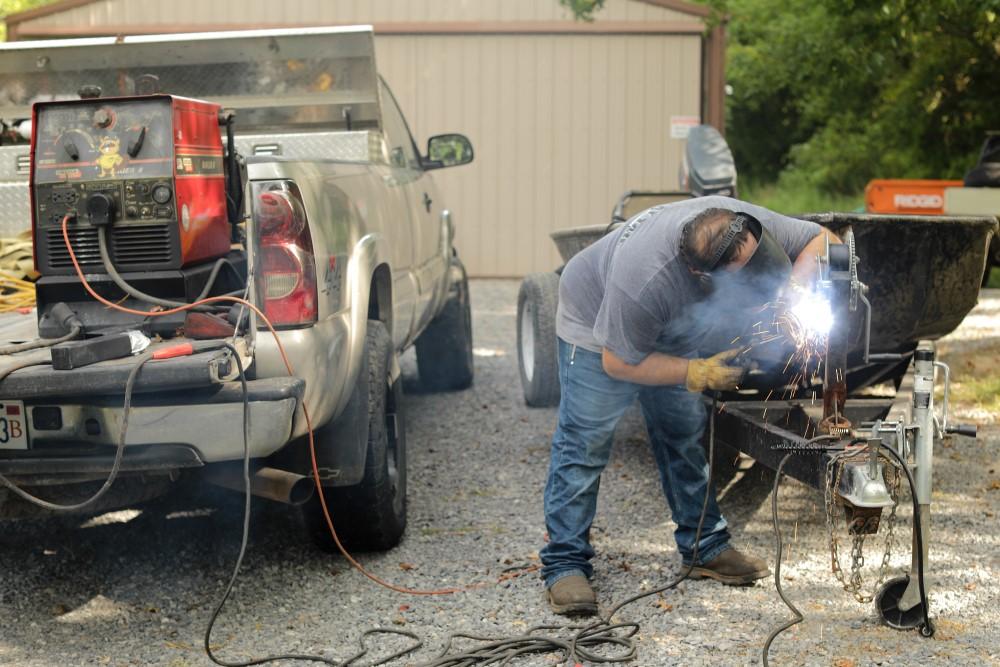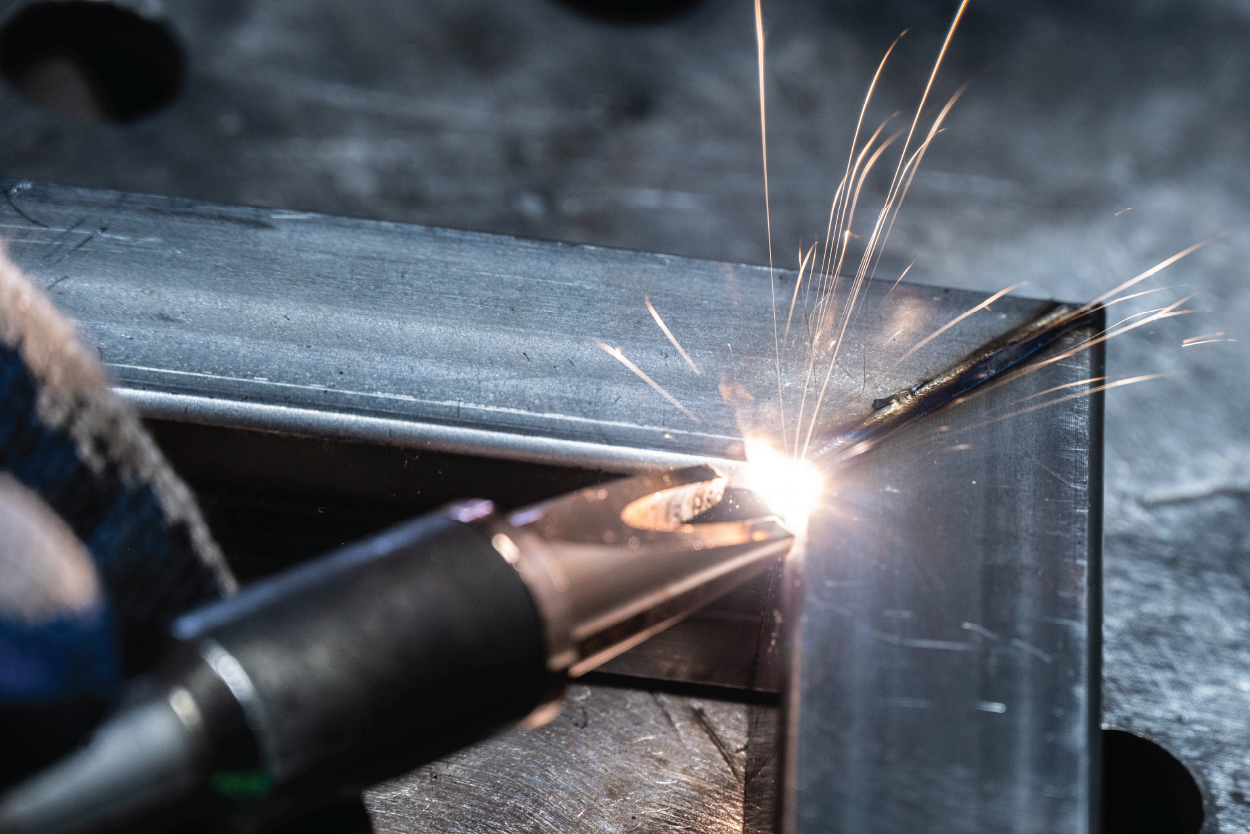All Regarding Welding: Key Insights Into Techniques and Best Practices for Success
Welding incorporates a variety of strategies, each matched for specific materials and applications. Recognizing these approaches, such as GMAW, SMAW, and TIG, is vital for achieving suitable outcomes. The right devices and security methods can not be ignored. As prep work and troubleshooting play important functions in the welding process, understanding these elements can considerably boost the top quality of the end product. What are the key factors that assure a successful weld?
Comprehending Various Welding Strategies
Welding techniques encompass a selection of methods, each fit to particular applications and materials. Among one of the most common strategies are Gas Metal Arc Welding (GMAW), Shielded Metal Arc Welding (SMAW), and Tungsten Inert Gas Welding (TIG) GMAW, additionally known as MIG welding, is preferred for its speed and convenience, making it optimal for slim materials. SMAW, or stick welding, is preferred for its simpleness and effectiveness in outdoor atmospheres, especially with thicker metals. TIG welding provides accuracy and control, making it ideal for intricate work and non-ferrous steels (Montana Mobile Welding and Repair Fabrication). Each method has its unique benefits and factors to consider, allowing welders to select the most effective method based on the project's demands, material type, and desired end results. Understanding these methods is essential for effective welding
Vital Welding Equipment and Devices
While different welding strategies require specific skills, the right devices and tools are just as necessary for accomplishing top quality results. Vital welding tools consists of welding machines, which vary relying on the strategy-- such as MIG, TIG, or stick welding. Protective equipment, consisting of gloves, aprons, and helmets, assurances security and comfort throughout the procedure. On top of that, fixtures and clamps help secure materials in position, making sure precision in welds. Consumables like welding poles, cord, and shielding gas are additionally vital elements that affect the high quality of the weld. Tools such as mills and cutters promote surface area preparation and post-weld ending up, contributing to a specialist outcome. Spending in premium tools ultimately boosts the efficiency and efficiency of welding jobs.
Safety And Security Practices in Welding
Appropriate safety and security practices are essential in the welding industry to protect workers from prospective hazards. Welders have to wear appropriate personal protective tools (PPE), including helmets with correct shading, gloves, and flame-resistant clothes. Sufficient ventilation is essential to minimize direct exposure to hazardous fumes and gases generated throughout the welding procedure. Additionally, employees should be learnt the correct handling of welding equipment to avoid mishaps. Fire precaution, such as maintaining combustible materials away from the welding area and having fire extinguishers easily available, are necessary. Normal inspections of tools and workspaces can help identify possible dangers prior to they lead to accidents. By adhering to these safety and security practices, welders can produce a much safer working atmosphere and minimize dangers related to their trade.
Preparing Materials for Welding
Preparing products for welding is an important step that significantly influences the high quality and integrity of the end product (Montana Mobile Welding and Repair Belgrade). Correct prep work entails cleansing the surfaces to eliminate pollutants such as oil, corrosion, and dirt, which can compromise the weld. Strategies such as grinding, fining sand, or making use of solvents are commonly used to achieve a clean surface. In addition, making certain that the materials fit together well is vital; gaps can result in weak welds. It's additionally vital to think about the alignment and positioning of the parts, as this will certainly influence the simplicity of welding and the final outcome. Lastly, selecting the appropriate filler material and making certain compatibility with the base metals is important for attaining strong, long lasting welds
Tips for Getting High-Quality Welds
Accomplishing top notch welds calls for interest to information and adherence to best methods throughout the welding process. Proper joint preparation is essential, making sure surfaces are clean and cost-free from pollutants. Picking the suitable filler product and welding strategy based upon the base metals is critical for ideal bonding. Preserving constant travel rate and angle while welding can advertise and protect against issues harmony. Furthermore, regulating warmth input is important; too much warm can bring about bending and compromised joints. If necessary, frequently inspecting the welds throughout the process enables for instant modifications. Lastly, employing ideal post-weld treatments, such as cleansing and stress and anxiety alleviation, can improve the durability and visit the website honesty of the weld, inevitably making sure an effective result.
Troubleshooting Common Welding Issues
Welding typically presents challenges that can influence the top quality and honesty of the last item. Common problems such as porosity, inconsistent weld grains, and overheating can arise, each requiring certain fixing strategies. Recognizing these issues is important for welders to improve their abilities and attain ideal results.
Porosity Problems Described
Although porosity can often be forgotten, it continues to be a vital problem in welding that can endanger the honesty of an ended up item. Porosity refers to the existence of little gas pockets within the weld grain, which can lead and compromise the joint to premature failure. This problem typically emerges from pollutants, moisture, or inappropriate securing gas insurance coverage during the welding process. To alleviate porosity, welders ought to verify that the base materials are tidy and dry, make use of proper securing gases, and preserve constant welding parameters. Routinely examining the tools and setting can additionally aid determine potential problems before they show up in the weld. Addressing porosity properly is important for achieving strong, durable welds that meet quality requirements.

Irregular Weld Beans
Inconsistent weld grains can greatly impact the high quality and toughness of a finished product. Various variables contribute to this problem, including incorrect travel rate, wrong amperage settings, and inconsistent electrode angles. When the welder relocates also rapidly, a bead may appear slim and do not have penetration, while moving as well slowly can cause extreme build-up. Additionally, using the incorrect amperage can result in either undercutting or excessive spatter, both of which concession weld honesty. The welder's technique, such as irregular torch movement, can additionally lead to uneven bead appearance. To mitigate these issues, welders ought to focus on preserving constant, regulated motions and making sure proper devices setups to accomplish harmony in their welds. Consistency is key to attaining dependable and solid welds.
Getting Too Hot and Warping Issues
Excessive heat throughout the welding procedure can cause substantial getting too hot and deforming problems, affecting the architectural honesty of the workpiece. These issues frequently show up as distortion, which can compromise positioning and fit-up, making additional setting up testing. Variables adding to overheating consist of the selection of welding parameters, such as voltage and travel rate, along with the type of product being bonded. To reduce these concerns, welders ought to maintain constant travel rate and proper heat input while monitoring the workpiece temperature. Furthermore, pre-heating or post-weld warmth therapy can assist ease anxieties triggered by quick air conditioning - Montana Mobile Welding and Repair Belgrade. Routine evaluation and adherence to ideal methods are necessary in avoiding overheating and Recommended Site ensuring the long life and dependability of welded structures
Regularly Asked Inquiries
What Are the Occupation Opportunities in the Welding Market?
The welding market provides varied job opportunities, consisting of settings as welders, engineers, teachers, and examiners. Specialists can operate in manufacturing, building and construction, aerospace, and auto markets, gaining from solid demand and competitive wages in numerous roles.
Exactly How Can I Enhance My Welding Rate Without Giving Up Quality?
To enhance welding rate without giving up top quality, one ought to exercise efficient strategies, maintain equipment, enhance settings, and boost hand-eye control. Routine training and seeking comments can also significantly add to attaining quicker, top notch welds.
What Accreditations Are Readily Available for Welders?
Various qualifications exist for welders, including those from the American Welding Society (AWS), the National Facility for Building Education and Study (NCCER), and various industry-specific companies. These credentials improve employability and show skill effectiveness.
Just How Does Welding Affect the Characteristics of Metals?
Welding affects the residential properties of metals by modifying their microstructure, which can cause modifications in ductility, hardness, and toughness. Warm input and cooling prices throughout the procedure significantly affect these product characteristics.
Can I Bonded Dissimilar Metals With Each Other?
